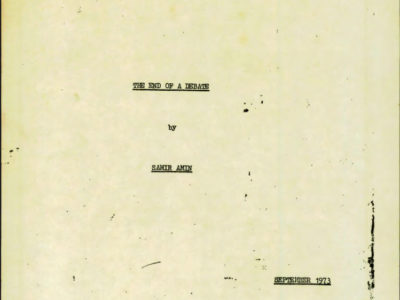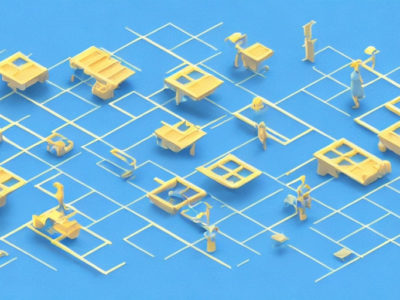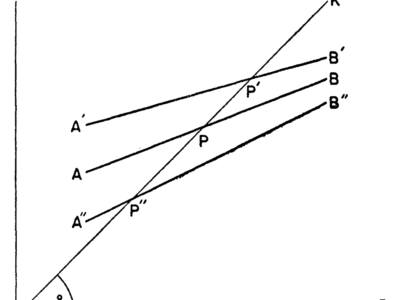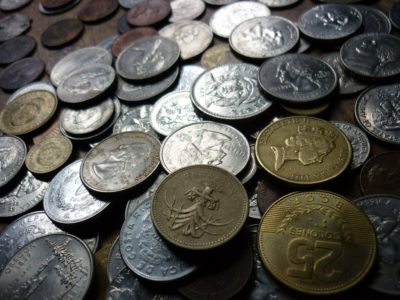Interview with Gernot Köhler, author of “Global Keynesianism: Unequal Exchange and Global Exploitation”, “The Global Wage System: A Study Of International Wage Differences”, “Global Apartheid” and more:
The Cadre Journal: Tell readers a bit of background about yourself, perhaps focused on your research interests, what prompted them, and what you’re working on now.
Gernot Köhler: The Cuban Missile Crisis of October 1962 shocked not only the world but also me, an undergraduate student in West Germany. At that time, West Germany was armed to its teeth in order to help defend NATO and the West against East Germany, the Warsaw Pact, the Soviet Union, and the Communist World, if needed. During the Missile Crisis, each and every day could have been the day when the great bloodbath and nuclear Armageddon started. West and East Germany could have become major war zones, including nuclear obliteration. That shocking outlook turned me into a political scientist and peace researcher. After completing undergraduate work in Berlin at the Free University of Berlin (Freie Universitaet Berlin) I moved to the United States and Canada. I researched international wars, armaments, and military expenditures. Peace is such a broad concept that it can lead you to many other areas of study beyond international war; for example, civil wars and revolutions, the art of peace-making and conflict resolution, the psychology of conflict, and the social, economic, and ecological dimensions of war and violence. As my research evolved, I got interested in world-system studies, world center and periphery and dependency theory, imperialism, structural violence, global apartheid, unequal exchange, global stratification, and post-Keynesian economic ideas. I am presently retired and not writing, only thinking. But there is still a forthcoming article on unequal exchange between South Africa and the World, including China, that I presented to the American Economic Association some time ago.
TCJ: We’re curious about how your theory of Unequal Exchange compares with those put forward by Samir Amin and Arghiri Emmanuel. You argue for a different method of analyzing the phenomenon of unequal exchange. Can you explain your diverging points?
GK: Emmanuel’s and Amin’s splendid writings on the subject contain the kinds of theory of unequal exchange that I find persuasive and that inspired me. They challenged the empiricist in me: how can unequal exchange be quantified? Emmanuel did not produce statistics of unequal exchange but observed that the magnitude of unequal exchange between center and periphery countries is non-trivial with respect to the gains received by center countries and losses borne by periphery countries due to unequal exchange. Amin published an article in Monthly Review journal in the 1970s where he gave an estimate of the global magnitude of unequal exchange. Unfortunately, the journal did not publish the details of Amin’s method, but only the resulting estimate.
A separate relevant development took place since then; namely, the World Bank started to develop the concept of purchasing power parity and to publish estimates of purchasing power parity (PPP) values for all countries. That put me to work. I was wondering: What do you get when you try to estimate unequal exchange with the use of those PPP values? I was pleasantly surprised to find that my own estimate of the magnitude of global unequal exchange was similar to the estimate that Amin had published. To this day I do not know how Amin arrived at his estimate. However, the fact that various scholars have been, and are, studying unequal exchange with PPP data supports the belief that PPP values are useful for estimating magnitudes of unequal exchange.
TCJ: How do you see the recent work of Jason Hickel in using your method of unequal exchange analysis to (re)calculate the volume of unequal exchange?
GK: Sorry, I am not up to date on Jason Hickel’s work. The web information about his books looks splendid.
TCJ: How does your theory of global money fit into this analysis? You argue for instance that “a country’s socio-economic status in the world system and the relative value of the country’s money within the world system are related”, concluding that “the exchange rate system is one of the mechanisms by which high-wage countries extract value from low-wage countries”. Can you explain more about this structure for readers?
GK: Millions of tourists who travel from North America or Europe to poorer countries enjoy the fact that their dollars or Euros buy more in those countries than at home, provided they leave their cruise ship and look around on their own. Likewise, tourists from poorer countries find that their money buys less in North America or Europe than at home. The reason is that US dollars and Euros are “harder” currencies than many other currencies. The official (nominal) exchange rates of countries are frequently not reflecting the purchasing power of the home currency in a foreign country.
An example: Let’s say, I am a barber in Canada and I travel to Cuba. I make friends with a Cuban barber and we agree to give each other a haircut. We get to work. He cuts my hair, I cut his hair. That is an equal exchange, namely, a haircut for a haircut. Note that no money changed hands. It is a barter trade. Now let us change the procedure. The Cuban barber is not my friend and I buy a haircut from him. He charges me his going rate, namely, the equivalent of – let’s say, one Canadian dollar. Then he asks me how much a haircut costs in Canada. Well, I say, that would be – let’s say, 26 dollars Canadian. That means that for the dollar he earned from the haircut he gave me, that Cuban barber could not afford a haircut from me in Canada. That would be an unequal exchange that he cannot afford. Note that in this situation the exchange is not a barter trade (a physical haircut for a physical haircut), but an exchange of two monetary values.
In statistical research, we find that there is a correlation between the per capita income of a country and the relative “strength” of its currency (with exceptions). Calling the structure of global money a “class structure” would be a bit too pretentious, but the currencies of the world tend to follow the pattern of global stratification, in the sense of a rich country – strong currency; a poor country – weak currency. That pattern leads to one of the mechanisms that cause unequal exchange.
TCJ: In your article “Surplus Value and Transfer Value” you attempt to add some theoretical weight to Samir Amin (and others like Ruy Mauro Marini) who use the concept of “super-exploitation”. Do you see this as still being a relevant tool for understanding the stratification of labor worldwide?
GK: Suppose that you and I agree that unequal exchange processes exist in the world system. Then, what name do you attach to the amount of value that is siphoned off from some countries and added to the accounts of some other countries? You can label those amounts “losses due to unequal exchange” and “gains due to unequal exchange.” It appears that Amin calls those amounts of gain or loss “transfer values”.
In the Marxist dictionary, those transfer values must be treated separately from “surplus value”, because unequal exchange (and transfer value) happen in the sphere of international finance and trade and not in the sphere of the production process of goods and services at the factory level. Once a Marxist acknowledges that there is surplus value and transfer value in the world system, what does he or she call the combination of those two values? If his name is Amin, he calls that “super-exploitation.” On the other hand, if a scholar is not a Marxist, he or she can talk about losses or gains from unequal exchange without using the Marxist concepts of surplus value and super-exploitation.
TCJ: You analyzed world worker stratification in your paper “Unemployment (Center) and Unequal Exchange (Center-Periphery)”, and concluded that “First World labour should pay attention to the fact that they and labour in the Second and Third Worlds get hit by the same world-system in different ways (unemployment, super-exploitation) — some grounds for labour solidarity across continents”. Do you still have an optimistic view of that possible labour solidarity? What has changed, if anything, in the 20 years since you argued this?
GK: Labour solidarity is a good concept that labour activists may invoke in order to organize collective action by the workers they are speaking for. Actual international labour solidarity is generally not easy to bring about. For example, at the beginning of World War I, the labour leaders of France and Germany tried their best to bring about labour solidarity between French and German workers for a common fight against that looming war. But they failed. The masses of French and German workers were following the appeals of nationalism, and the war took place. In today’s world system the outlook for achieving international labour solidarity appears as bleak as 20 years ago. But the possibility of some limited international labour solidarity should not be discounted. For example, there has been a movement in rich countries for paying “fair prices” for coffee in support of the coffee workers in other countries. There must be other areas in which limited international labour solidarity could be organized. Hello, labour leaders, be creative! It appears that some religious communities have been more engaged in international solidarity than labour organizations, for example, Christian churches and Muslim communities.
TCJ: We want to explore the concept of Global Apartheid further. First, can you briefly explain this idea, and how it relates to structural violence at a global level? What are the “Empirical, Normative, Existential” views of Global Apartheid? Then, can you compare it to that put forward by Samir Amin?
GK: Some people, including myself, started to write about global apartheid a few decades ago when South Africa pursued “apartheid” as a public policy, that is, a policy of racial segregation and separate treatment of whites and non-whites. At that time, the United States and other countries organized a boycott of South Africa. The United Nations declared “apartheid” to be a crime. At that time, it became increasingly obvious to the Western White World that the colonialism practiced by many Western countries had treated large numbers of peoples around the world in ways similar to South African apartheid and that, even after decolonization, major parts of the world suffered from the long-term effects of colonialism, notably, racial stigma, underdeveloped economies, low status in the world system, and high incidence of wars and revolutions. Thus, the concept of global apartheid was born.
How does the concept of structural violence relate to that situation? Structural violence is violence that causes death and suffering, which is caused by social, economic and political structures, as opposed to death and suffering caused by war and other kinds of armed violence. For example, an epidemic or pandemic may create large-scale death and suffering. Hunger and starvation have similar effects. Those effects are caused by nature and/or the health or economic systems. To the extent that health systems or economic systems can be blamed for the resulting misery, people die or suffer from “structural violence”. Similarly, the political conditions of a society may be such that some or all members of that society suffer from incompetent or unjust policies. With respect to global apartheid, the claim is that many societies, especially in the non-Western, non-white parts of the world that used to be colonies, are still suffering from the effects of social, economic and political structures left over from the colonial era. That view is the same as Samir Amin’s view and is also the view of a “world system” school of thought (e.g., Wallerstein and others). In an article I wrote about “Empirical, Normative, and Existential” views of Global Apartheid. I argued that global apartheid is present (a) in an “empirical” dimension, i.e., documentable through statistical and other observation; (b) in a “normative” dimension, i.e., in the bodies of existing laws, rules, and institutions; and (c) in an “existential” dimension – another label for that could be “in the dimension of consciousness” similar to “class consciousness”, but lifted to the global level. The traditional European empires had self-images and feelings of pride and prejudice about their role in the world. Thus, France believed in her “role civilasatrice” (civilizing role), as a leader of world civilization, justifying her empire. “In the east and in the west, the English are the best” – Great Britain. “Am deutschen Wesen muss die Welt genesen” – German imperialism. Imperial China considered itself the “middle kingdom”. More recently, the United States is taking it for granted to be the center and leader of the world system. The Soviet Union considered itself the paramount socialist country of the world. The “developed countries” considered themselves as ranking a mile above the “underdeveloped countries”, and so on. I am referring to states of consciousness.
TCJ: You argued that “global society is a mirror reflection of South African society”. How does this still apply today, and how can we incorporate concepts like unequal exchange within this analysis of Global Apartheid?
GK: South Africa has dropped its former apartheid policies. But one can continue using the term “Global Apartheid” with reference to the old South African apartheid system. However, an important challenge for the concept of global apartheid arises from the emergence of various former “Third World” countries that have gained significant prosperity, power, and global status in recent decades, including, for example, India and China. China’s GDP, if measured in PPP (purchasing power parity) dollars, is greater than that of the United States. That means that the concept of global apartheid has grown less plausible than it has been for a while. These changes give the pundits who study the world system a lot of new issues to think about. Irrespective of whether we characterize the world system as global apartheid or as a system of center and periphery countries, unequal exchange takes place due to the functioning of the international economy. As Arghiri Emmanuel observed, unequal exchange is, ultimately, caused by the differences in wage levels between countries.
In a book of mine, I studied wage levels around the world and found that wage levels for identical work differ sharply between countries in various categories of work, e.g., teachers, agricultural workers, and others. That contributes to unequal pay for work of equal value on the global level. We think that is natural, but it is not. The women’s liberation movement has been fighting against unequal pay for work of equal value between men and women for a long time, arguing that those unequal wages are not natural, but man-made. A similar argument can be applied to international wage differences, namely, that international wage differences for work of equal value are not natural or God-given, but rather, the result of economic structures maintained by humans.
TCJ: Final question: what is the relevance of your idea of Global Utopia for the present ecological movement?
GK: Over the past twenty years, the consciousness of the worldwide ecological movement has evolved in a major way. It added the problem of climate change to its previous catalog of environmental problems like finite natural resources, preservation of species diversity, preservation of natural habitats, and others. The issue of climate change was not only added to the concerns of the ecological movement, but it has risen to the top of all environmental concerns. My article on Global Utopia did not address climate change at all and has thus become relatively irrelevant.
Thank you to Gernot Köhler for this interview.
Also see here: https://thecadrejournal.org/essays-articles/archived-writings/interview-with-gernot-khler-on-unequal-exchange-global-apartheid-and-more










